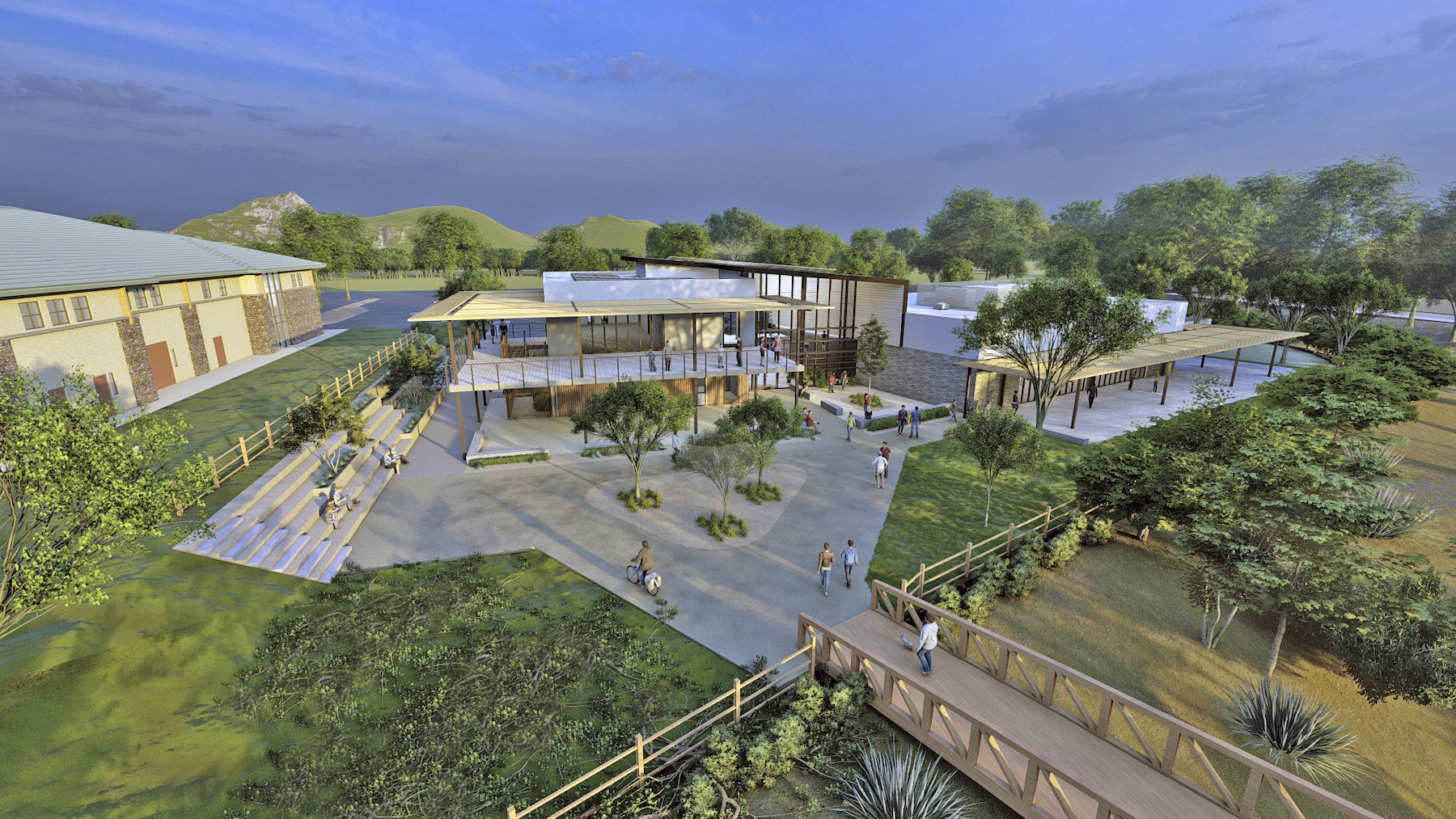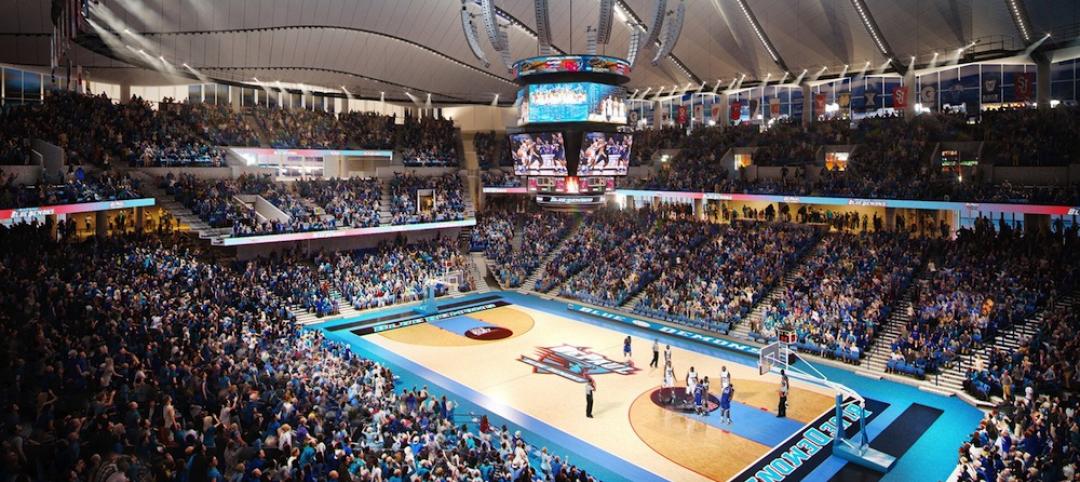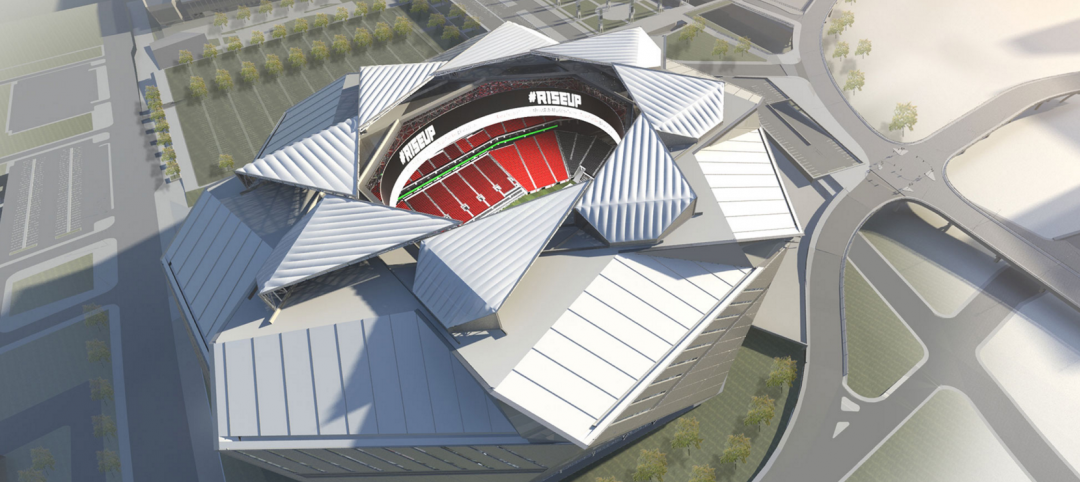The intersection of a community with its natural surroundings is one key to a successful design of community centers, according to a new 24-page paper titled “Creating a Wellness Culture,” about the benefits of this building type, cowritten by HMC Architects’ Civic Practice Leader Kyle Peterson, and Director of Design James Krueger, who used three of their firm’s recent projects to buttress their thesis.
Among the virtues of community centers, the authors assert, are how they empower youth, strengthen neighborhoods, and provide programs for a livable community. They promote socialization, relationships, and mutual support; help to develop a sense of self-reliance, social responsibility, and cohesion within the community; and empower individuals and families toward solving community problems and improving the quality of community life.
“Community centers provide valuable context and environments for their communities because they provide us a sense of place and belonging and often fill the gaps in much-needed human and social services,” the authors state.
Community centers' broad touch
Krueger and Peterson elaborate that these buildings can be seen as integral to a community’s economic and resident wellness by creating a positive atmosphere, “thereby reducing reliance on healthcare and other costly social services.”
The Centers can unite the community in various ways. For example, by offering after-school activities, they can help reduce youth crime rates. (The authors point to a study by the YMCA of USA, which found that teens who do not participate in after-school programs are three times more likely to skip classes, experiment with drugs and alcohol, and be sexually active.)
Community centers increase property value, boost student performance, provide “much needed” event space, public safety, and volunteer opportunities. “This gives people a chance to build their confidence and be part of a team, meet new friends, and learn new skills they can take into other aspects of their lives.”
The authors singled out three of HMC Architects’ Community Center projects as case studies:
• When it’s completed next year, the 40,300-sf Community Recreation Center in Mammoth Lakes, in California’s Sierra Nevada Mountains, will feature an Olympic-sized ice rink, and provide other indoor activities for a town that has few options during inclement weather.
The goal is to create a recreation destination that encompasses a variety of complementary, high-quality, and affordable recreation activities, all in one downtown location. During the summer months, the arena will be transformed into a fully programmable and multi-use 20,000-sf Rec Zone, serving as the base camp for the town’s expanding Parks and Recreation Department summer camps and programs. The Rec Zone includes a portable sports floor that can be placed within the ice rink to allow for basketball, volleyball, futsal, and pickleball. Additionally, the town’s Parks and Recreation department has discussed the possibility of holding concerts and farmer’s markets within the Center.
HMC teamed with Sprung Structures to design a tensile structure that provides a cost-effective 140-foot clear-span building that met the town’s seismic conditions and heavy snow loads. The kit-of-parts Sprung system allowed for quick erection of its prefabricated structural components and skin to ensure that the building is dried-in before winter snows halt construction activities.
The Center is positioned on the southwest corner of Mammoth Creek Park to mitigate noise from the neighborhood.
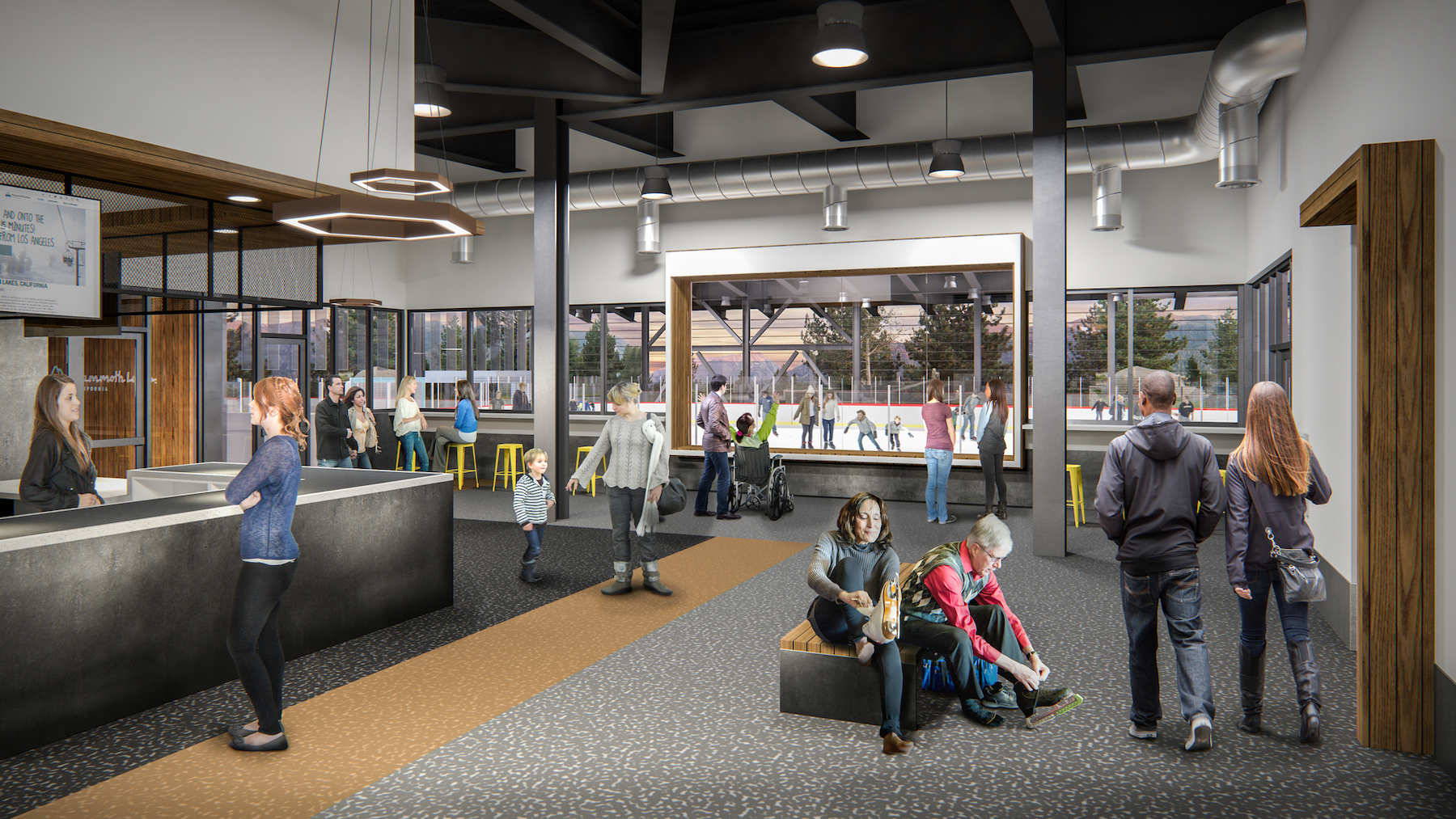
• The nearby Woodglen Vista Creek, a watershed for the San Diego River waterway system, is playing a prominent role in the design and positioning of the $13.7 million, 12,700-sf Santee Community Center in southern California, which is part of a comprehensive public amenities master plan, and is scheduled for completion in 2025.
The building’s event spaces will overlook the creek and frame views to nature. Sliding glass walls will allow daylight and fresh air to permeate. Outdoor patios and shade structures extend to the south, offering relief from the summer sun. Native landscaping rims the site, naturally transitioning to the banks of the creek.
The building’s two-story entry/lobby space allows access to the event center on the second level with a large outdoor deck that allows for unobstructed views of the creek and sunsets. The Community Center is also designed to reduce its energy usage by 71 percent, compared to other like-buildings.
• Since its completion in 2018, the 19,000-sf Quail Hill Community Center in Irvine, Calif., has become a gateway to the Irvine Open Space Preserve, a designated natural landmark.
One of the largest community centers in the area, Quail Hill serves more than 300,000 residents.
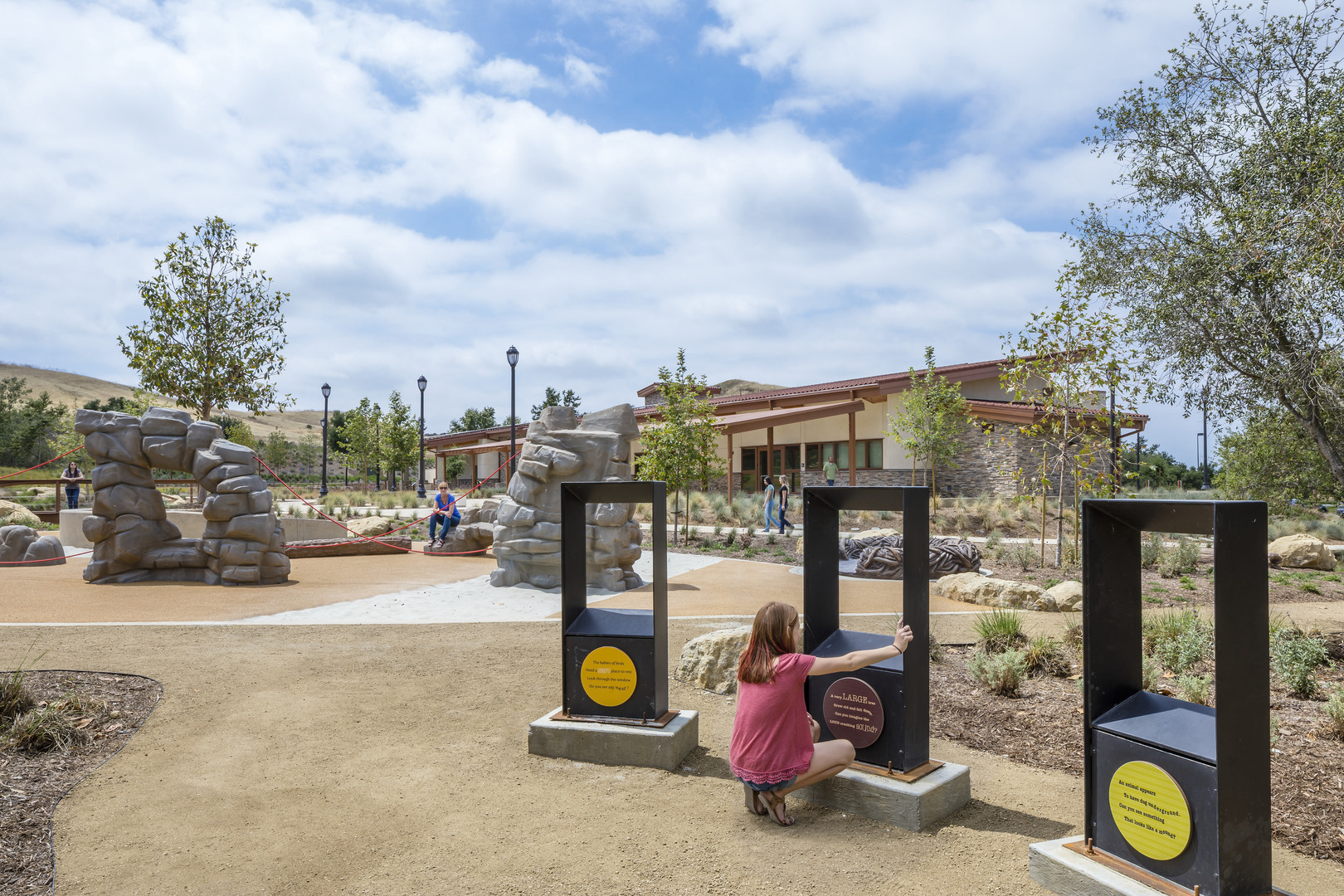
The goal in its design was to create connected indoor and outdoor spaces that offer various activities, programs and classes—all connected to nature. “Many of the lessons offered focus on educating visitors about the local flora and fauna and connecting users to the local trail system that extends through the Quail Hill Loop Trail leading to the coast,” the authors state.
The design team incorporated several strategies to reduce energy and water use, including solar panel arrays, high-efficiency LED lighting, low water use fixtures, and native landscaping. These strategies resulted in a LEED Gold certification through the U.S. Green Building Council.
Inside the building, HMC created four key program zones: an exercise room for wellness activities such as dance and yoga classes; classrooms for early childhood education and other special interest classes; a space for fine arts camps and adult art classes; and a rentable conference center for large training events, weddings, and other group activities.
Related Stories
Sports and Recreational Facilities | Mar 14, 2016
Washington Redskins tease new stadium model designed by Bjarke Ingels
The location isn't yet determined, but the new stadium will have a moat for kayaking.
Events Facilities | Mar 7, 2016
Experts pessimistic on Chicago’s $650 million McCormick Place expansion
Developers and city officials envision $250 million of annual growth, but the figure assumes that a new arena will lure conventions and draw full houses for basketball games.
Industry Research | Feb 22, 2016
8 of the most interesting trends from Gensler’s Design Forecast 2016
Technology is running wild in Gensler’s 2016 forecast, as things like virtual reality, "smart" buildings and products, and fully connected online and offline worlds are making their presence felt throughout many of the future's top trends.
Game Changers | Feb 5, 2016
Mega surf parks take entertainment to new extremes
Wave-making technologies vie for attention, as surfing is shortlisted for 2020 Olympic Games.
Game Changers | Feb 4, 2016
GAME CHANGERS: 6 projects that rewrite the rules of commercial design and construction
BD+C’s inaugural Game Changers report highlights today’s pacesetting projects, from a prefab high-rise in China to a breakthrough research lab in the Midwest.
Sponsored | Sports and Recreational Facilities | Feb 3, 2016
New $96.5 million Ole Miss Basketball Arena Opened in January
The recently constructed basketball arena at Ole Miss, The Pavilion, exudes sophistication due to its spectacular curved roof coated with a vibrant Terra Cotta Fluropon.
Sports and Recreational Facilities | Jan 29, 2016
Billion-dollar dome in Las Vegas could be the Oakland Raiders next home
The franchise, which is considering relocation if it can’t work out a stadium deal in the Bay Area, is listening to a new stadium pitch from investors in Las Vegas, led by the Sands Corp.
Giants 400 | Jan 29, 2016
SPORTS FACILITIES GIANTS: Populous, AECOM, Turner among top sports sector AEC firms
BD+C's rankings of the nation's largest sports sector design and construction firms, as reported in the 2015 Giants 300 Report
| Jan 14, 2016
How to succeed with EIFS: exterior insulation and finish systems
This AIA CES Discovery course discusses the six elements of an EIFS wall assembly; common EIFS failures and how to prevent them; and EIFS and sustainability.
Sports and Recreational Facilities | Jan 13, 2016
Multi-billion-dollar stadium planned as the NFL returns to Los Angeles
The Rams, formerly of St. Louis, will move into a new stadium possibly by 2019—and they might have a co-tenant.


